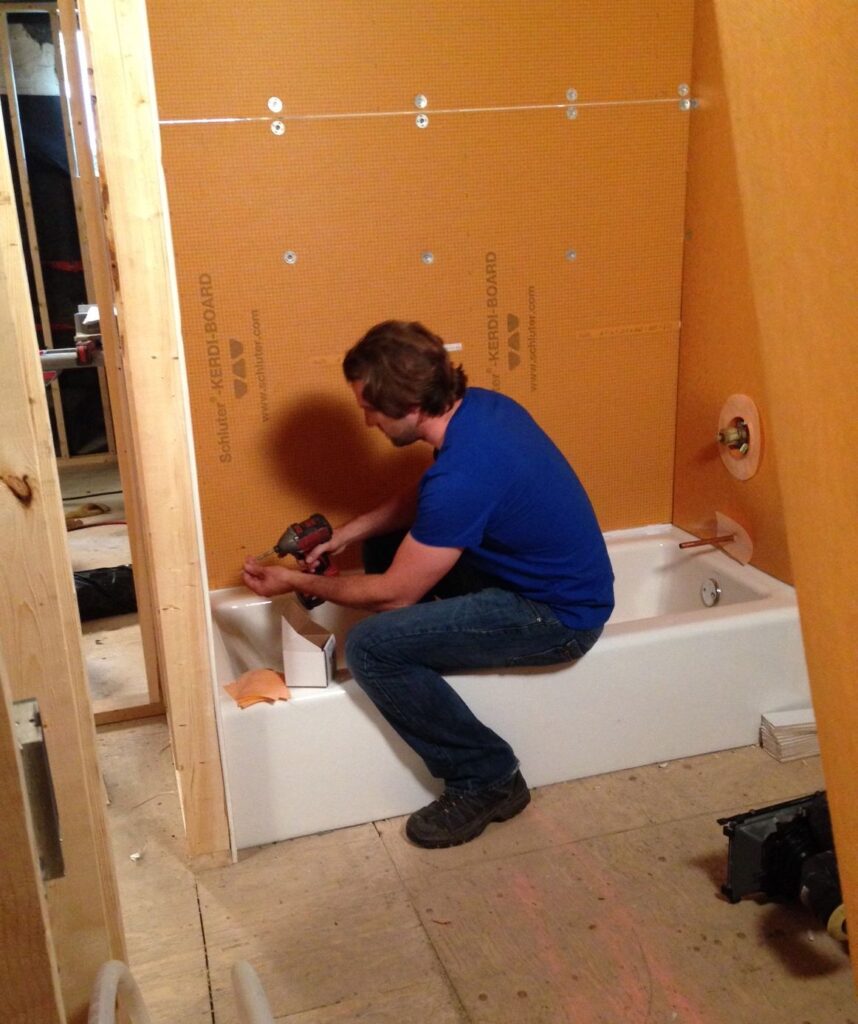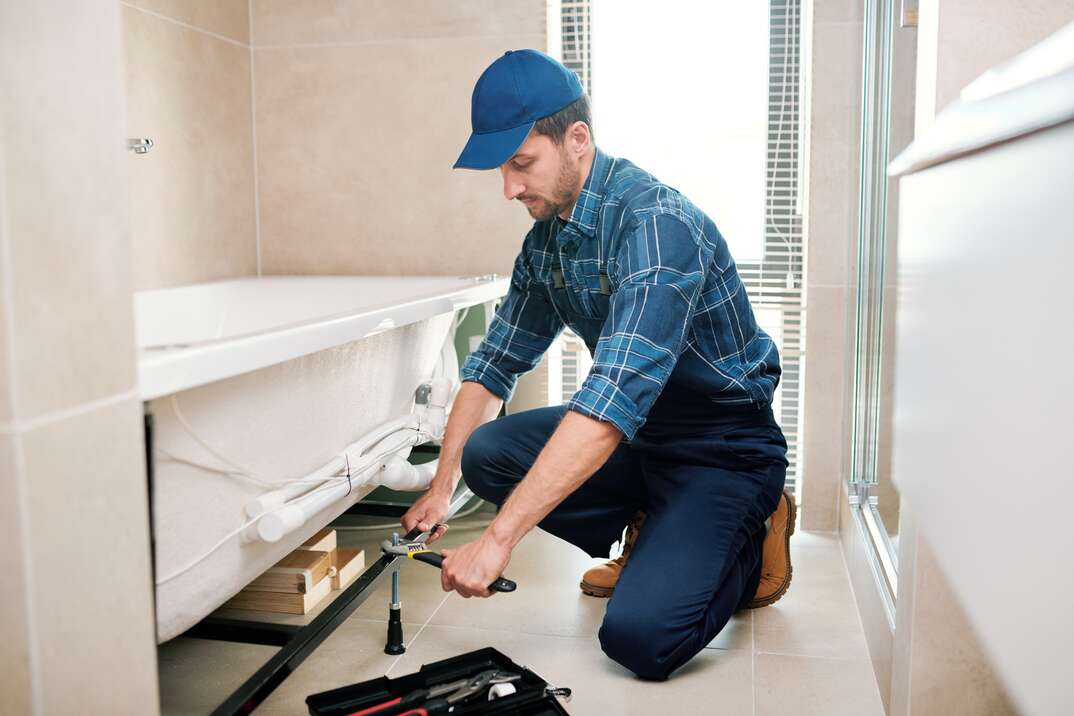Devices You Need to Install a New Bath Tub
Devices You Need to Install a New Bath Tub
Blog Article
Just about every person may have their own idea in relation to Installing A Bathtub.

Installing a bath tub isn't precisely brain surgery, however it does require strong plumbing, woodworking, and occasionally, tiling skills. Changing an old bathtub with a brand-new one is likewise a moderately difficult job. If the old tub is easily accessible, the task can move easily; if you have to open up a wall to get rid of the old tub as well as position the new bath tub, the task is a lot harder. In either instance, the project is within a house handyman's abilities, although you will certainly need a helper to leave the old bathtub and set in the brand-new one. See to it you have qualified yourself for the work and also are comfortable attempting it. Instead of working with a contractor to take over a halfway-completed job, it is far better to take into consideration using one before you start. Opportunities are you might need a professional plumber to make tube connections.
This post will certainly aid you mount a brand-new tub in your washroom if you have actually currently acquired a brand-new tub and don't need to change the plan of your previous water system pipelines.
Your devices and also product list need to consist of the following:
Removing Old Touches
If you require to change old faucets with brand-new ones as a part of your installment, after that the first thing you must do is detach the water system. After doing so, turn on the taps to drain any water remaining in the system. The procedure of getting rid of the existing faucets can be fairly bothersome as a result of the limited gain access to that is typically the situation.
Use a basin wrench (crowsfoot spanner) or a faucet tool to reverse the nut that attaches the supply pipelines to the faucets. Have a towel all set for the continuing to be water that will certainly originate from the pipelines. As soon as the supply pipelines have actually been gotten rid of, utilize the exact same device to loosen up the nut that holds the taps onto the bath/basin. You will need to stop the single taps from transforming throughout this procedure. As soon as the taps have been gotten rid of, the holes in the bath/basin will certainly have to be cleaned of any old securing compound.
Before going on to fit the brand-new taps, contrast the pipeline connections on the old faucets to the brand-new taps. If the old faucets are longer than the new taps, after that a shank adapter is needed for the brand-new faucets to fit.
Fitting New Touches
If the tails of the new taps are plastic, after that you will certainly need a plastic connector to stop damage to the thread. One end of the adapter fits on the plastic tail of the tap and the various other end supplies a connection to the existing supply pipelines.
If you need to fit a monobloc, after that you will call for decreasing couplers, which attaches the 10mm pipe of the monobloc to the standard 15mm supply pipe.
Next off, position the faucet in the installing hole in the bath/basin making certain that the washers are in location in between the tap and the sink. Protect the faucet in place with the producer supplied backnut. As soon as the faucet is firmly in position, the supply pipelines can be attached to the tails of the faucets. The faucets can either be connected by using corrugated copper piping or with normal tap connectors. The former type should be connected to the tap ends first, tightening just by hand. The supply pipelines can later on be linked to the various other end. Tighten up both ends with a spanner after both ends have actually been linked.
Setting up the Tub
Using both wood boards under its feet, put the bathtub in the required placement. The wood boards are valuable in evenly spreading out the weight of the tub over the area of the boards instead of focusing all the weight onto 4 little points.
The next objective is to make sure that the tub is leveled all round. This can be achieved by examining the level and adjusting the feet on the bath tub up until the spirit level reviews degree.
To install faucets, fit all-time low of the furthest adaptable faucet connector to the ideal supply pipe by making a compression join; after that do the exact same for the various other tap.
Activate the water system and also inspect all joints and also new pipework for leakages and tighten them if essential. Fill the bath tub and likewise check the overflow electrical outlet as well as the normal electrical outlet for leaks.
Ultimately, take care of the bathroom paneling as explained in the manufacturer's user's manual. Tiling and securing around the bathtub needs to wait until the bath tub has been made use of a minimum of when as this will resolve it into its last placement.
Getting ready for the Installment
First of all, the sustaining frame provided with the bath must be fitted (if required) according to the maker's instructions. Next, fit the faucets or mixer to the bathtub. When suitable the faucet block, it is very important to see to it that if the tap includes a plastic washing machine, it is fitted between the bathroom and the taps. On a plastic bathroom, it is also practical to fit a sustaining plate under the taps system to stop strain on the tub.
Fit the adaptable tap ports to the bottom of both taps utilizing 2 nuts and also olives (sometimes supplied with the bathtub). Fit the plug-hole electrical outlet by smearing mastic filler round the sink outlet hole, and after that pass the electrical outlet through the hole in the bath. Utilize the nut provided by the supplier to fit the plug-hole. Examine the plug-hole electrical outlet for an inlet on the side for the overflow pipe.
Next, fit the end of the flexible overflow pipe to the overflow outlet. After that, screw the pipe to the overflow face which must be fitted inside the bathroom. See to it you use all of the provided washing machines.
Attach the trap to the bottom of the waste outlet on the tub by winding the string of the waste electrical outlet with silicone mastic or PTFE tape, and also screw on the catch to the outlet. Connect the bottom of the overflow tube in a similar manner.The bath ought to currently prepare to be fitted in its final setting.
Tiling Around the Bath tub
In the location where the bath satisfies the ceramic tile, it is essential to seal the joins with a silicone rubber caulking. This is very important as the installation can relocate sufficient to crack a rigid seal, triggering the water to pass through the wall surface in between the bath and the tiling, causing issues with wetness and possible leaks to the ceiling below.
You can select from a range of coloured sealers to assimilate your components and also fittings. They are sold in tubes and cartridges, and are capable of sealing spaces as much as a width of 3mm (1/8 inch). If you have a bigger space to load, you can load it with spins of drenched paper or soft rope. Bear in mind to constantly load the bath tub with water prior to securing, to permit the activity experienced when the bathtub remains in usage. The sealer can split relatively very early if you do not think about this activity prior to securing.
Additionally, ceramic coving or quadrant ceramic tiles can be utilized to edge the bath or shower tray. Plastic strips of coving, which are easy to use and cut to size, are additionally conveniently readily available on the marketplace. It is a good idea to fit the ceramic tiles utilizing water-resistant or waterproof adhesive and cement.
Bathtub Installation
How Important Is A Bathtub To Your Home?
High-quality baths, showers, and other bathroom updates are necessary when considering a smart investment in your home. It’s a room that you go to every day and one that is constantly being used by guests.The bathroom is one of the top trafficked rooms in a home and also one of the most valuable in terms of home resale.
Install Piping Before Tub
You will be using your existing drain and waste vent system, but pipes required include the hot and cold water supply lines and a pipe leading to a shower head. A mixing valve and shower head are also needed. Air chambers may be required.
Position the Tub
Lower the tub into place so that the continuous flange fits against the wall studs and rests on 1’x4' or 2’x4' supports. Anchor the tub to the enclosure with nails or screws inserted through the flanges into the studs.
NOTE: Remember, bathtubs and shower stalls may require support framing. A bathtub filled with water is extremely heavy, so check building codes and framing support before installing the tub.
Assemble Drain Connections
Assemble the bathtub drain connections by connecting the tub overflow with the tub drain above the trap, not beyond it. The trap will have a compression fitting that screws over the arm of the overflow assembly.
Place a Pipe For the Shower Head
First, locate a brass female threaded winged fitting and attach it to a framing support via a screw or a nail. Then run a pipe up the wall for the shower head. Sweat or solder the other side of the brass fitting to the top of the pipe.
Attaching Hot and Cold Water Lines
Attach your water lines for both hot and cold by sweating these directly into the hot and cold ports of the mixing valve. The mixing valve will be how water enters the tub’s system, not by the pipes themselves.
Install the Spout
Extend a piece of 1/2 inch pipe, or whichever length is specified in the manufacturer’s instructions, for the tub spout. Sweat on a male threaded fitting at the end of the pipe or use a brass nipple of the proper length and a 1/2 inch cap.
NOTE: At this point you should have your rough-in plumbing work inspected before proceeding further.
Check For Leaks
Restore the water pressure and check the drain connection and the supply pipes for any sign of leaking.
estore the Bathroom Wall
Replace the wall with moisture-resistant drywall as a base for your wall covering. Seal the joints between the wall and your new tub with silicone caulk as protection against water seepage.
https://www.berkeys.com/2016/12/02/bathtub-installation-dallas/

As a keen person who reads on How to Install a Bathtub Yourself, I figured sharing that piece of content was really helpful. Make sure you set aside a second to promote this article if you enjoyed it. We truly appreciate reading our article about A Step-by-Step Guide to Installing a Bathtub.
Visit Site
Report this page